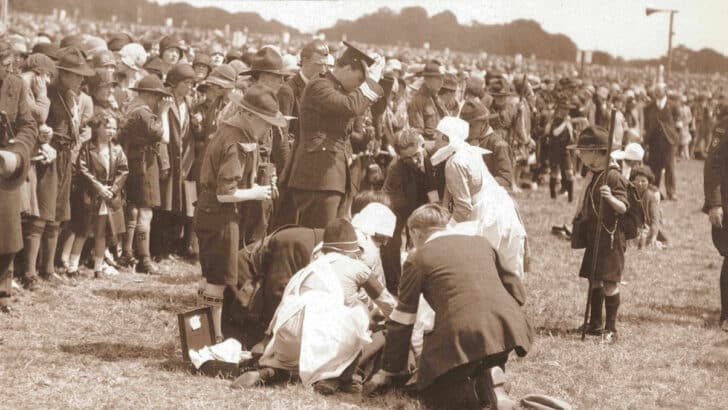In the new Programme for Government, which Fine Gael and Fianna Fáil have been labouring over with the rural independents, there is a curious omission.
No provision is made for any official arrangements to mark the Bicentenary of the Catholic emancipation which falls in the summer of 2029.
Given the huge volume of effort and goodwill that went into celebrating the ‘Decade of Remembrance’, recalling the long years of revolutionary Ireland between 1913 and 1923, not to commemorate an earlier historical landmark, which was hailed as a great social change, not only for Ireland, but also for our neighbours in England, Wales and Scotland, a change achieved through peaceful campaigning and by parliamentary action rather than by violent means, seems a strange lapse.
But perhaps in these days people are not too clear about what ‘Catholic emancipation’ was, what it meant in 1829, and what it was thought to have achieved in 1929.
Certainly, back in 1829, the passing of the “Catholic Relief Act”, which is the actual title of the Westminster parliamentary bill, was seen and celebrated by Irish people as a great national achievement.
It marked the end of a long process that had begun with a series earlier relief acts between 1774 and 1793, that had begun the tedious process of abolishing the infamous and odious ‘Penal Laws’.
Process
This process had come to a head with the recent campaign by Daniel O’Connell to take his seat in Parliament, when he was forbidden as a Catholic to do so. It was clear that it was time to do away finally with the last of the Penal laws.
O’Connell, nicknamed ‘The Liberator’, became a much admired figure of international fame.
In turn, at the centenary in 1929, the governments of the new Irish State saw fit to support the commemorations of this important event by facilitating the celebrations held over several days in late June of that year.
The climax of these was a Pontifical High Mass held in the Phoenix Park, on June 23, attended by up to 300,000 worshippers.
The Post Office had issued a commemorative stamp designed by Irish artist Leo Whelan, with the head of Daniel O’Connell – Ireland’s first ever commemorative stamp”
After this the Blessed Sacrament was paraded through the city, escorted by members of the Irish Army, and attended by both William Cosgrave, the President of the Executive Council of the Irish Free State, and Mr de Valera, in his robes as Chancellor of the National University of Ireland. Benediction was celebrated on a temporary altar erected on what is now the Rory O’Moore Bridge.
The day before the Post Office had issued a commemorative stamp designed by Irish artist Leo Whelan, with the head of Daniel O’Connell – Ireland’s first ever commemorative stamp.
Many schools were closed, so teachers and children could attend the events – some 40,000 children attended the Mass in the Park, supervised by some 8,000 stewards.
Special bronze badges depicting the bell of St Peter’s Church, which was the church that rang out first when emancipation had been declared a century before. The proceeds from these badges, it was reported, were expected to cover the cost of the entire celebrations.
Given the tone of Catholic triumphalism that hung over the events of 1929, it would seem that the present government does not wish to be seen to give support to an event which would be seen as overly Catholic and perhaps offensive to many in the present day.
Bear in mind the hierarchy itself may feel that is too does not want to sponsor an event that would seem to rake over old antagonisms.
But these notions arise perhaps from a failure on the part of government and Church to understand the historical significance of the events of 1829.
At the opening service of the centenary celebrations Dr James MacNamee, the Catholic Bishop of Ardagh and Clonmacnoise, mentioned in concluding his address, to recall the suffering of earlier generations of Catholics, but “in no desire to rekindle the fears and animosities of the past.”
Pride
Rather he suggested people should recall “with grateful pride the signal service to the cause of Catholic freedom of such great Protestants as Grattan, Burke and Tone”. The Protestants of 1929 would be animated too by their own spirit of justice and fair play.
But of greater significance were remarks made by the Rev. J. C. Breakey of Belfast at the Abbey Presbyterian Church on Parnell Square, preaching on the text from St Paul, “Where the Spirit of the Lord is, there is liberty”.
He remarked that “No Christian worthy of the name can be without some sympathy with those who rejoice in this great measure of religious freedom. If it is our duty, as indeed we believe it is, to ‘rejoice with them that do rejoice’, we cannot refrain from some expression of congratulation.”
The Act of 1829 was the conclusion of a process that had begun as the physical threat of a Stuart invasion to overthrow the House of Hanover receded after 1745. The infamous Penal laws were indeed odious, but they applied to Non-Conformists of various kinds as well as Catholics, and had long ceased to be tolerable to right thinking folk.
Significant
Anyone familiar with the course of Irish history will agree that the Catholic Relief Act was a significant moment that deserves commemoration.
But it ought to be seen as a celebration, not of sectarian division, but as a celebration of the religious freedoms enjoyed in Ireland, and which all can agree upon.
The civil servants advising the government will always ask first, “What was done last time?”. While a recreation of what was done in June 1929 might not now be agreeable to either the Catholic Church or the government, some way can easily be found.
The celebrations as a whole ought to be returned from the national level back to parish level, with each parish holding its own appropriate commemorations, along the lines of exploring what the passage of the act meant for their locality.
This could be done in a spirit of inter-faith appreciation of those religious freedoms that the Rev. Breakey and Dr McNamee spoke about in 1929. This would be in keeping with the past, the present, and the much desired peaceful future of the country.
As for the government they could facilitate the event by providing Dublin Castle as a venue for an interfaith conference on the theme of expanding and protecting religious freedoms in Ireland and elsewhere in the world today. These proceedings could be published as a book.
And though the sale of little bronze badges might not cover all the costs, as they did in 1929, a commemorative postage stamp, again with an image of Daniel O’Connell, who has in the past two centuries been all too often denigrated by Republicans and Socialists, would not come amiss either.
*
Peter Costello, the author of many books dealing with the life and culture of nineteenth century Ireland, is the former Honorary Librarian of the Central Catholic Library in Dublin.


 Peter Costello
Peter Costello
